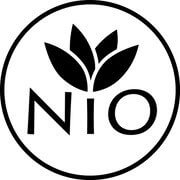Ceremonial matcha preparation can be both a fun and rewarding experience if you are able to learn it. If you ask any matcha drinker, drinking the actual matcha tea is only half of the process, the other half is the ritualized preparation of the matcha tea. This is a relic of the Japanese tea ceremony, which is where the term ceremonial matcha preparation comes from. In this article, we’re going to teach you a little bit about how to prepare ceremonial matcha and what things you may want to consider before making your own at home.
What are the different steps of the Ceremonial matcha preparation
In this segment we are going to learn how to make ceremonial matcha. If you follow these instructions step by step, it should be easy to make a great tasting bowl of matcha tea. Without further saying, let's whisk 🍵🍃
Measure

The first thing you may want to consider when it comes to ceremonial matcha preparation is the measurements.
While it is recommended to use a tool like a measurement tool like a scale or a measuring spoon, this won’t always be necessary, particularly after you’ve been preparing matcha tea for a long time.
Before you start following the steps on how to prepare ceremonial matcha, we recommend you first learn the measurements of 1 teaspoon of matcha powder and about ½ cup of water. This should be a great ratio when making a normal bowl of matcha tea.
Sift
After measuring, the first real step of how to make ceremonial matcha involves sifting. While this step may not be completely necessary, it does really make a difference when it comes to preparing a great tasting bowl of matcha tea. As soon as the tin is opened and the matcha powder is exposed to the humidity in the air, it will begin to form clumps. These clumps do not mean that the matcha has gone bad, but they will cause it to not mix as evenly into the water, so they should be removed.
The best way to do this is by running the powder through a sifter before your ceremonial matcha preparation. Just place the sifter over the matcha bowl and put in 1 teaspoon of matcha powder. Next, you can simply push the matcha through the sifter and the clumps will be taken care of.
Heat water & pour
Once you have a finely sifted powder at the bottom of your matcha bowl, you are ready to continue to the next step of how to make ceremonial matcha. You can now pour your water in and prepare to mix the water together with the powder. When it comes to water, you will want to use 120ml or about half a cup of water with a temperature of between 140-175 degrees fahrenheit. Unlike leaf teas, matcha doesn’t “brew” so temperature is less important but it still does prefer a temperature within this range. If you use water that is too hot, the tea can get bitter and if you use water that is too cold, you will have a harder time mixing the powder into the water.
Whisk

Once the hot water has been added to the powder, you are ready to continue to the most well-known step of our how to make ceremonial matcha guide, the whisking. You can start by gently stirring the matcha powder into the water, making sure it is all mixed in. You can start by scraping off the sides of the bowl, and later on the bottom. Its important to do this very gently because the matcha whisk can be quite fragile and prone to breaking if you rub it too hard against the side.
Next you can begin to create the foam by whisking up the matcha tea with your wrist in zigzag motions. This technique takes a long time to master, but once you get good at it, it should only take about 30 seconds for a beautiful foam to form on top. This foam is not just for looks, it also gives the tea a smoother and creamier taste.
Serve & enjoy
The final step of how to prepare ceremonial matcha is serving and enjoying the matcha tea. The traditional way to enjoy matcha tea is to simply drink it out of the matcha bowl. This is how it is done during the Japanese tea ceremony, and it can be a nice tradition to incorporate into your ceremonial matcha preparation ritual.
If you prefer to drink the matcha out of glasses, you can pour the tea from the bowl into the glasses and divide it between you and your guest. For this, you may prefer to pour the tea over the sink, or whisk it in something that has a spout so it is easier to pour without making a mess.
Equipment required for Ceremonial Matcha Preparation:
As important as how to make ceremonial matcha is what Japanese Teaware to use. Below we have made a list of the things you will need for your ceremonial matcha preparation in no particular order. We will also show you where you can find these tools if you don’t already have them at home.

Ceremonial matcha
Of course you can’t even begin your ceremonial matcha preparation without the matcha powder itself. When you are drinking matcha plain like this, it is important to go for the higher quality stuff. We recommend a super smooth okumidori matcha like the matcha washimine or nakai superior matcha. By using matcha teas like this, you will greatly reduce the bitterness of your matcha tea.
Matcha whisk

The most iconic and important tool of ceremonial matcha preparation is the matcha whisk. This bamboo matcha whisk, also called the chasen, is made out of a single piece of bamboo and the 100 small bristles move through the water to aerate the tea and create that nice foam on top.
We highly recommend that if you are planning on getting one tool for matcha preparation, it should be this. The chasen matcha whisk is the hardest tool to replace.
Chawan - Matcha bowl

The next tool for ceremonial matcha preparation is the clay matcha bowl or chawan. The chawan is what is used in the tea ceremony to prepare matcha tea for the guest. It usually has a beautiful pattern on the side that is meant to be turned towards the other guests so they can see the most beautiful part of the tea bowl as you drink it. This reinforces the principle of “respect” which is one of the 4 key principles of the Japanese tea ceremony.
The chawan matcha bowl is made out of thick heavy clay. This is meant to convey a sense of importance, as it demands the drinker of the matcha tea hold the bowl with two hands. This focuses the attention away from distractions and towards the tea itself. The thick clay can also retain heat well, and keep the tea warm overtime. The tea master preheats the clay before preparing the tea to ensure that the matcha tea stays warm.
Finally, the design of the chawan matcha bowl is more cylindrical in its shape. The higher sides of the tea bowl makes it easier to whisk the tea without spilling. Having this tea bowl is a crucial step in how to prepare ceremonial matcha.
Sifter
Another seldom talked about tool for ceremonial matcha preparation is the sifter or furui. This tool is not seen in the tea ceremony as the matcha powder is often sifted beforehand. These tools are easy enough to find, and they can make it so that your matcha mixes much more evenly into the water. If you really want to take your ceremonial matcha preparation to the next level, it’s recommended you get one of these.
How to prepare ceremonial matcha without whisk?
While the chasen matcha whisk is the best tool to make matcha tea, if you don’t have one it shouldn’t be an excuse to not make delicious bowls of ceremonial matcha. There are a few tools that can work, and each one has it’s advantages and disadvantages. Before going into the detail, checkout our complete video on the topic right here 👇
Milk frother
A milk frother is a good replacement, but it can cost as much if not more than a bamboo whisk, and doesn’t work quite as well. If you have one at home you should use it instead of the whisk, but if you don’t have one its better to invest in the chasen.
A Jar
You can also shake matcha up in a jar to prepare it. This technique is great when it comes to creating the foam on top of the matcha, but it can create a matcha with a lot of clumps that is not very fun to drink. If you do your ceremonial matcha preparation in a shaker jar, make sure you do not skip the sifting step!
Metal whisk
Finally, you can use a metal whisk but it does not work as well as the bamboo one. The metal bristles slice through the water and don’t aerate the tea quite as much. They also create a horrible noise which can disrupt your quiet matcha preparation ritual. This is why when it comes to ceremonial matcha preparation, it’s best to stick with the traditional bamboo whisk.
What are the different grades of matcha?
There are a few different grades of matcha powder and as you will notice before beginning this guide on how to make ceremonial matcha, we made sure to specify that you should only be using the top grade matcha powder, which we will explain below.
Ceremonial grade matcha
This matcha is the highest grade, and it is meant to be consumed plain, without milk or sugar. There are a lot of steps in the production process that make the tea naturally smooth and sweet. If these steps are skipped, you will end up with a bitter tasting matcha that will need to be mixed with milk or sugar to drink. When it comes to ceremonial matcha preparation, it is crucial to use this high grade powder.
Latte grade matcha
Latte grade matcha is typically made from a later harvest and it can be a bit too bitter for ceremonial matcha preparation. This matcha is best served as a Matcha Green Tea Latte, mixed with soy milk and a bit of sweetener. Because latte grade matcha is made from a later harvest, in addition to having a more bitter flavor, it will also be lower in nutrients and caffeine.
Cooking grade matcha
Cooking and baking should only be done with the lowest grade of matcha powder. These culinary grade matcha teas are very bitter, but they work great if you are combining them in a recipe that includes lots of other ingredients such as matcha brownies for example. The advantage of this matcha is that it is so cheap, you can use a few tablespoons here and there without spending too much money on the tea.
What is the difference between Usucha and Koicha?
There are two different styles of matcha preparation, both of which can be used in the japanese tea ceremony. The first is more common and that is usucha or thin tea. The second is used in special tea ceremonies and that is koicha or thick matcha.
How to Prepare Usucha ("thin tea")
- Step 1: Place the sifter on top of a bowl
- Step 2: Add 1 teaspoon of matcha to the sifter
- Step 3: Push the powder through the sifter to get rid of the clumps
- Step 4: Add just enough water to the bowl to form a paste (this makes it even easier to make sure there are no clumps)
- Step 5: Add 2oz of water to the bowl (85 degrees C)
- Step 6: Whisk the tea. Start by clearing off the sides and then whisk to create a foam.
How to Prepare Koicha ("thick tea")
- Step 1: Place the sifter on top of a bowl
- Step 2: Add 2 teaspoons of matcha to the sifter
- Step 3: Push the powder through the sifter to get rid of the clumps
- Step 4: Add 2oz of water to the bowl (85 degrees C)
- Step 5: Mix the powder and water together in the bowl until a thick paste is created. Make sure you completely scrape of the sides of the bowl.
- Step 6: Drink the matcha paste
Choosing a Matcha
When it comes to choosing a matcha tea, it all comes down to what you are planning on using the matcha for. If you are going to preparing matcha plain, with just water, we recommend you check out some of our ceremonial grade matcha. After traveling around Japan for the past few years we have met with dozens of farmers and tried hundreds of different matcha teas. We have selected the best tasting ones we have found and we can share them all with you on our website nioteas.com. These high quality matchas will be the best for ceremonial matcha preparation.
If you are more of a matcha latte fan, we have a great latte grade matcha you can try. This one is from Mr. Masuda, a talented farmer in Shizuoka. Even though this matcha is a bit more bitter, it is grown with love and care and without pesticides. Whenever you are drinking matcha, even if it is for lattes, it is important to make it from a matcha powder that was grown without pesticides.




